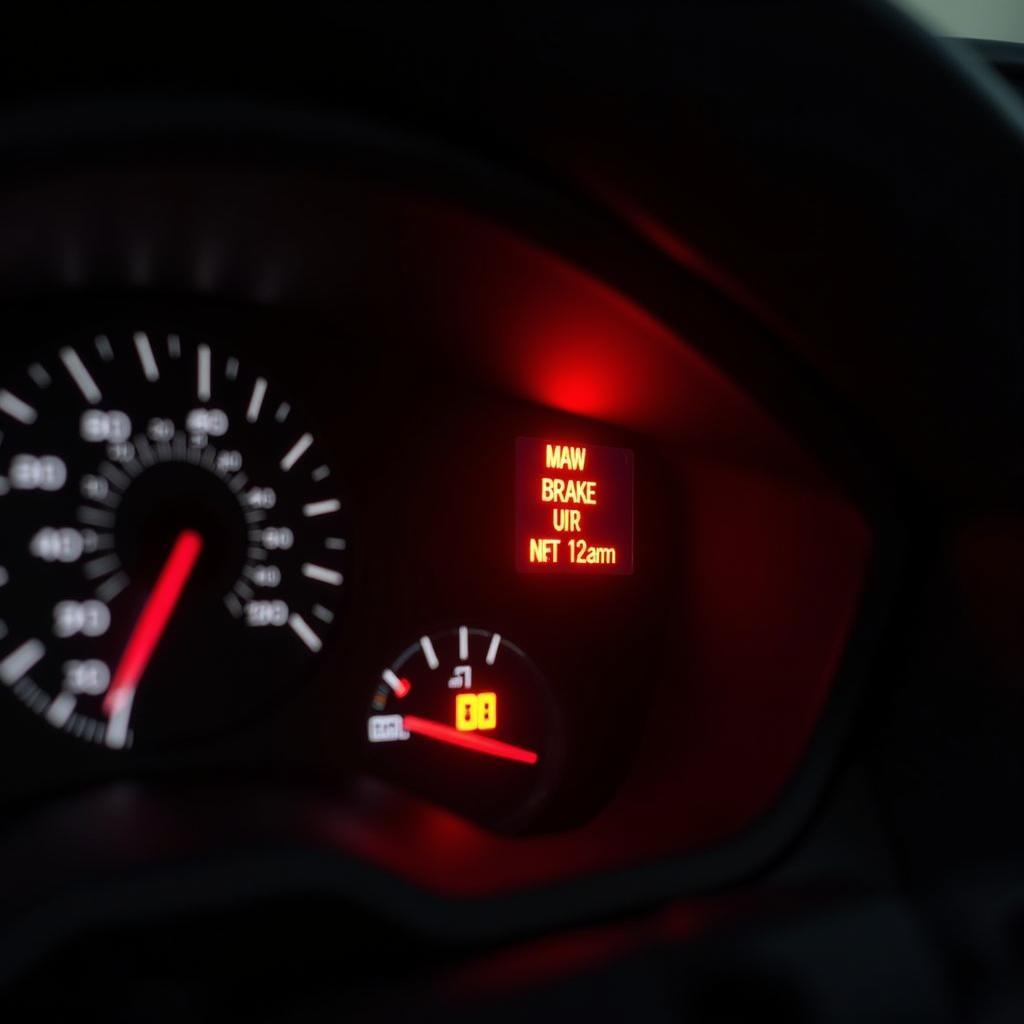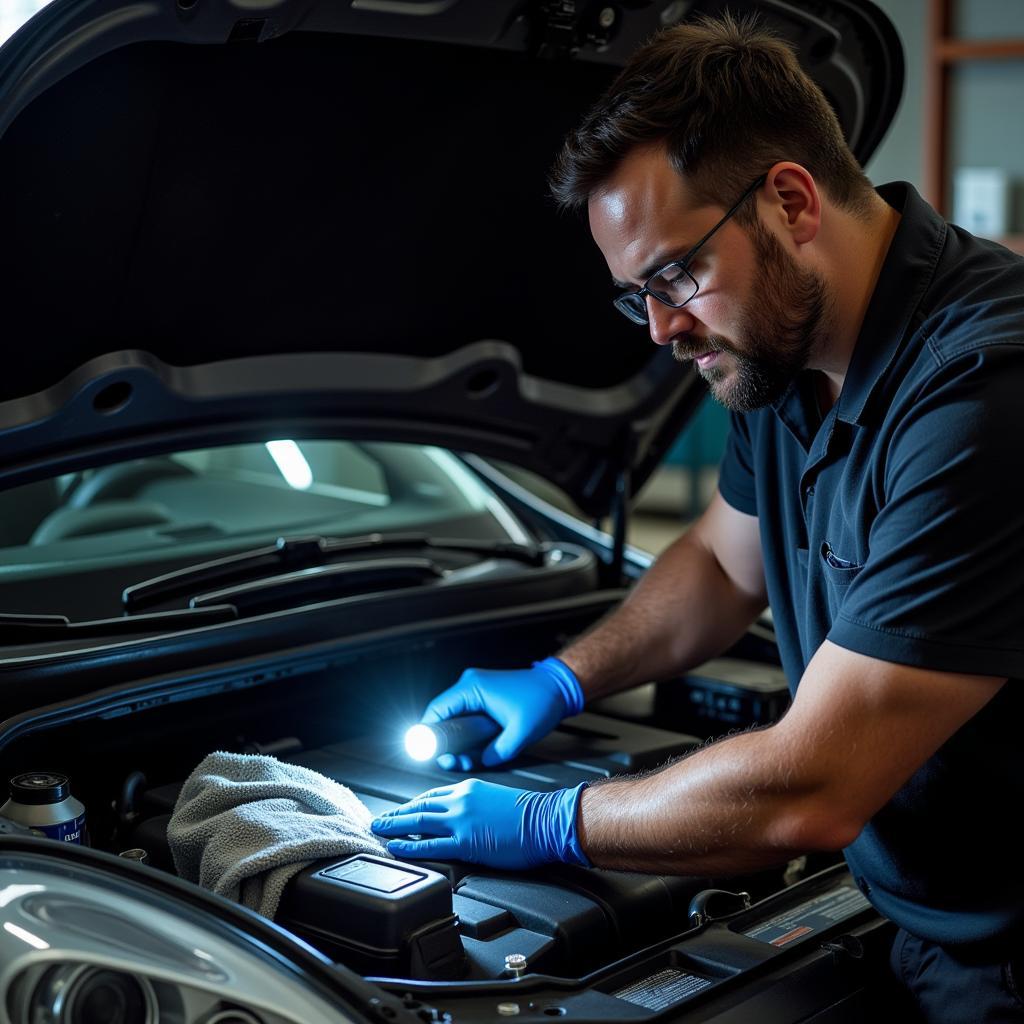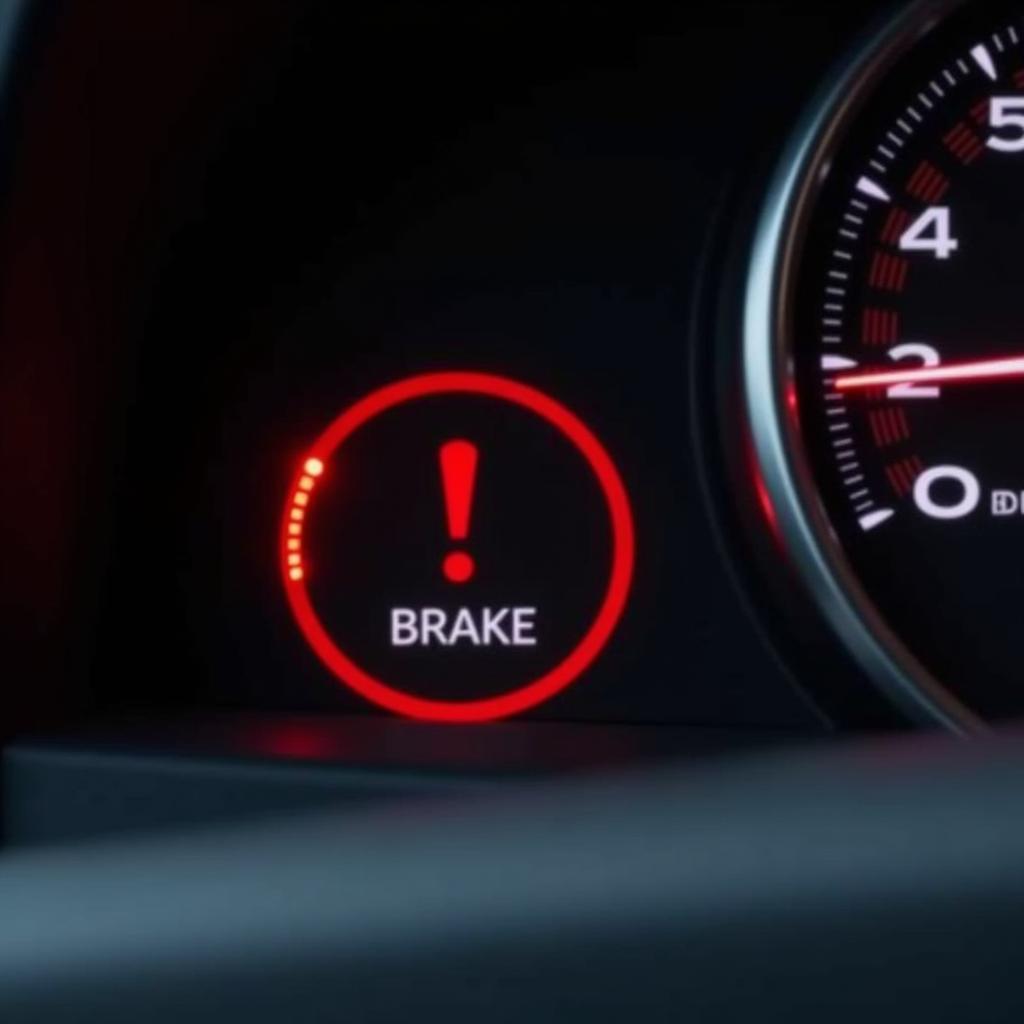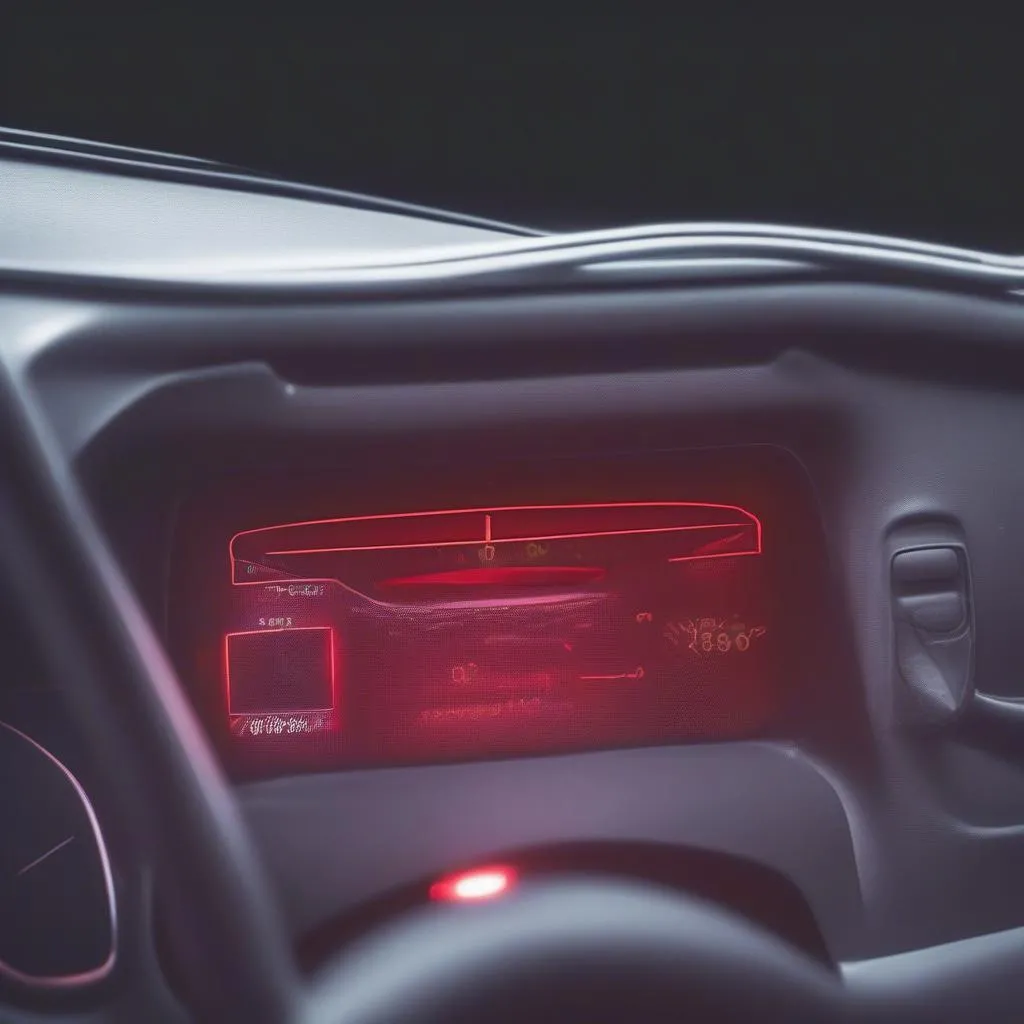The emergency brake warning light is a crucial safety feature in your vehicle. It’s a red light on your dashboard, often symbolized by an exclamation mark inside a circle or the letters “BRAKE,” that illuminates when your parking brake, also known as an emergency brake, is engaged. While its primary function seems straightforward – to alert you about an applied parking brake – it can also signal other underlying issues with your car’s braking system.
 Emergency brake warning light on car dashboard
Emergency brake warning light on car dashboard
Common Reasons Your Emergency Brake Warning Light is On
Understanding why your emergency brake warning light is on can save you time, money, and potential safety hazards. Here are the most common reasons:
- Engaged Parking Brake: The most obvious reason is simply that you forgot to disengage your parking brake. Always double-check this before driving.
- Low Brake Fluid: The emergency brake system often shares the same fluid reservoir as your hydraulic brakes. If the light stays on even after releasing the parking brake, it could signify a leak in the braking system, leading to low brake fluid.
- Faulty Brake Fluid Level Sensor: A malfunctioning sensor might inaccurately report low brake fluid levels, triggering the warning light even when the fluid level is adequate.
- Worn-Out Brake Pads: While not directly related to the parking brake, worn-out brake pads on your primary braking system can sometimes trigger the emergency brake warning light in certain car models.
- Electrical Issues: A short circuit, loose wiring, or a faulty switch in the emergency brake system can also turn on the warning light.
What to Do When Your Emergency Brake Warning Light Turns On
- Safety First: If the light comes on while driving, find a safe place to pull over as soon as possible.
- Check Your Parking Brake: Ensure the parking brake is fully disengaged. If the light turns off, you’re good to go. If not, proceed to the next step.
- Inspect Brake Fluid: With the engine off, carefully open the brake fluid reservoir (refer to your car’s manual for its location). Check the fluid level; if it’s low, you likely have a leak and need to visit a mechanic immediately.
- Seek Professional Help: If the light persists despite checking the parking brake and brake fluid, it’s crucial to have your car diagnosed by a certified mechanic. They have the expertise and tools to pinpoint and address the underlying issue.
 Mechanic checking car brake fluid level
Mechanic checking car brake fluid level
Emergency Brake Warning Light vs. Brake System Warning Light
It’s essential to distinguish between the emergency brake warning light and the brake system warning light, as they signal different problems.
The emergency brake warning light, as discussed, primarily indicates an engaged parking brake or issues related to it.
The brake system warning light, often appearing as a red circle with an exclamation mark and the word “BRAKE,” typically signals a problem with your main hydraulic braking system, like low brake fluid or a malfunctioning ABS (Anti-lock Braking System).
 Brake system warning light illuminated on dashboard
Brake system warning light illuminated on dashboard
“Ignoring either warning light can have severe consequences, compromising your safety and potentially leading to brake failure,” warns John Miller, a certified automotive engineer with over 20 years of experience. “Always address these warnings promptly to ensure the optimal functioning of your braking system.”
Remote Diagnostics and Software Solutions for Modern Vehicles
In many modern vehicles, remote diagnostics and software solutions can play a crucial role in identifying and addressing emergency brake warning light issues.
By connecting your car to a specialized diagnostic tool, either at a repair shop or remotely via specialized software, mechanics can access your vehicle’s computer system, read error codes, and often identify the root cause of the problem. In some cases, they might even be able to resolve the issue remotely by updating software, recalibrating sensors, or resetting the warning light after confirming the problem is fixed.
2016 mazda 6 emergency brake warning light
Preventing Emergency Brake Warning Light Issues
While some issues require professional attention, you can take proactive measures to prevent the emergency brake warning light from illuminating unnecessarily:
- Regular Maintenance: Adhere to your car manufacturer’s recommended maintenance schedule for brake fluid flushes, brake pad replacements, and overall brake system inspections.
- Engage Parking Brake Regularly: Even when parked on a level surface, engaging the parking brake occasionally keeps its components moving and prevents them from seizing up.
- Avoid Riding the Parking Brake: Avoid driving with the parking brake partially engaged, as this can lead to premature wear and tear.
Conclusion
The emergency brake warning light is a crucial safety feature designed to alert you to potential problems with your parking brake or braking system. Understanding what triggers this light and taking appropriate action can prevent accidents, costly repairs, and ensure a safe driving experience. Remember, a glowing warning light is always a call for attention, and addressing it promptly can save you trouble in the long run.
FAQ
1. Can I drive with the emergency brake warning light on?
It’s not recommended. While you might be able to drive for a short distance, continuing to drive with the light on could damage your brakes and potentially lead to an accident.
2. How much does it cost to fix an emergency brake light issue?
The cost can vary greatly depending on the underlying problem. A simple brake fluid top-up might cost a few dollars, while fixing a leak in the braking system or replacing a faulty sensor could cost significantly more.
3. Can a bad battery cause the emergency brake light to come on?
While a failing battery can cause various electrical issues in your car, it’s less likely to directly trigger the emergency brake warning light.
4. How often should I check my brake fluid?
It’s good practice to check your brake fluid level at least once a month and always before long trips.
5. Is the emergency brake the same as the parking brake?
Yes, the terms “emergency brake” and “parking brake” are often used interchangeably. They refer to the same system designed to keep your vehicle stationary when parked.

